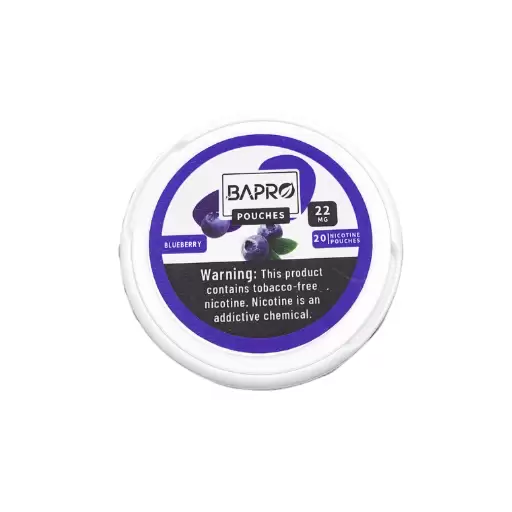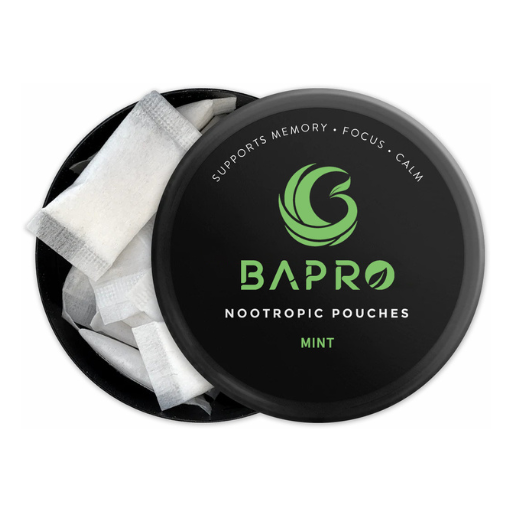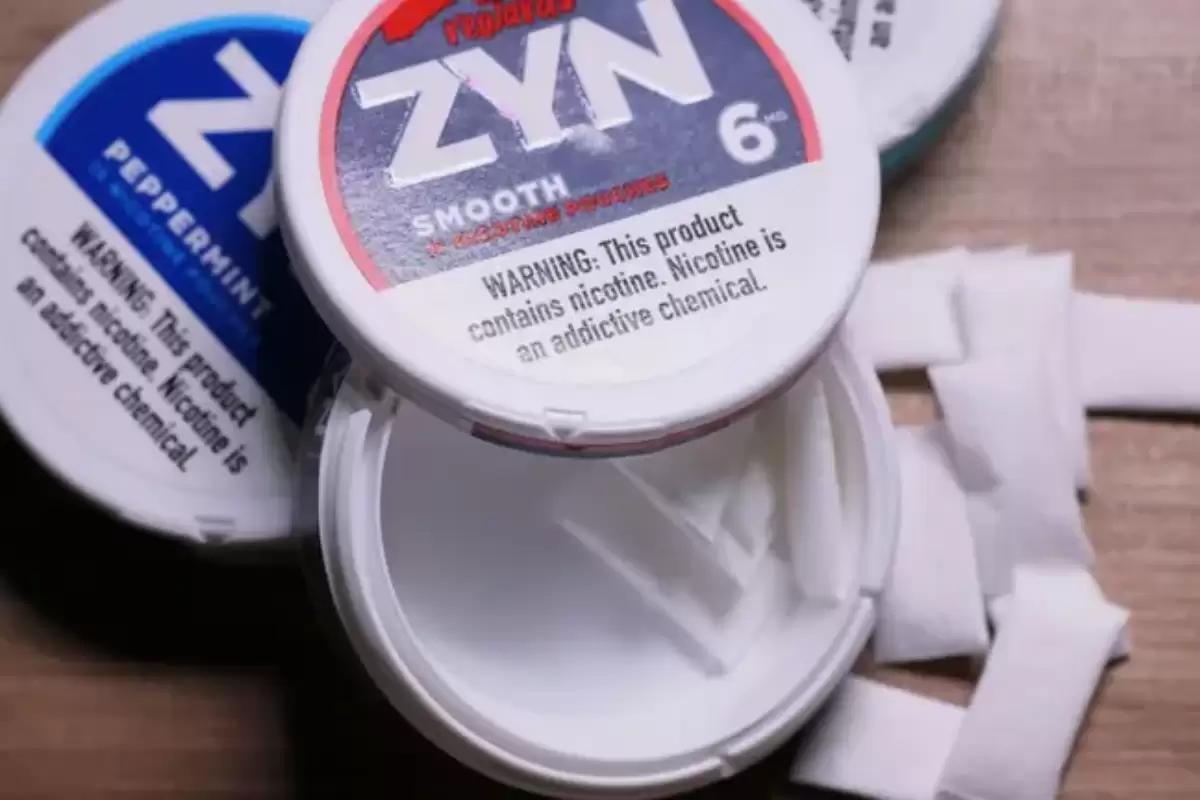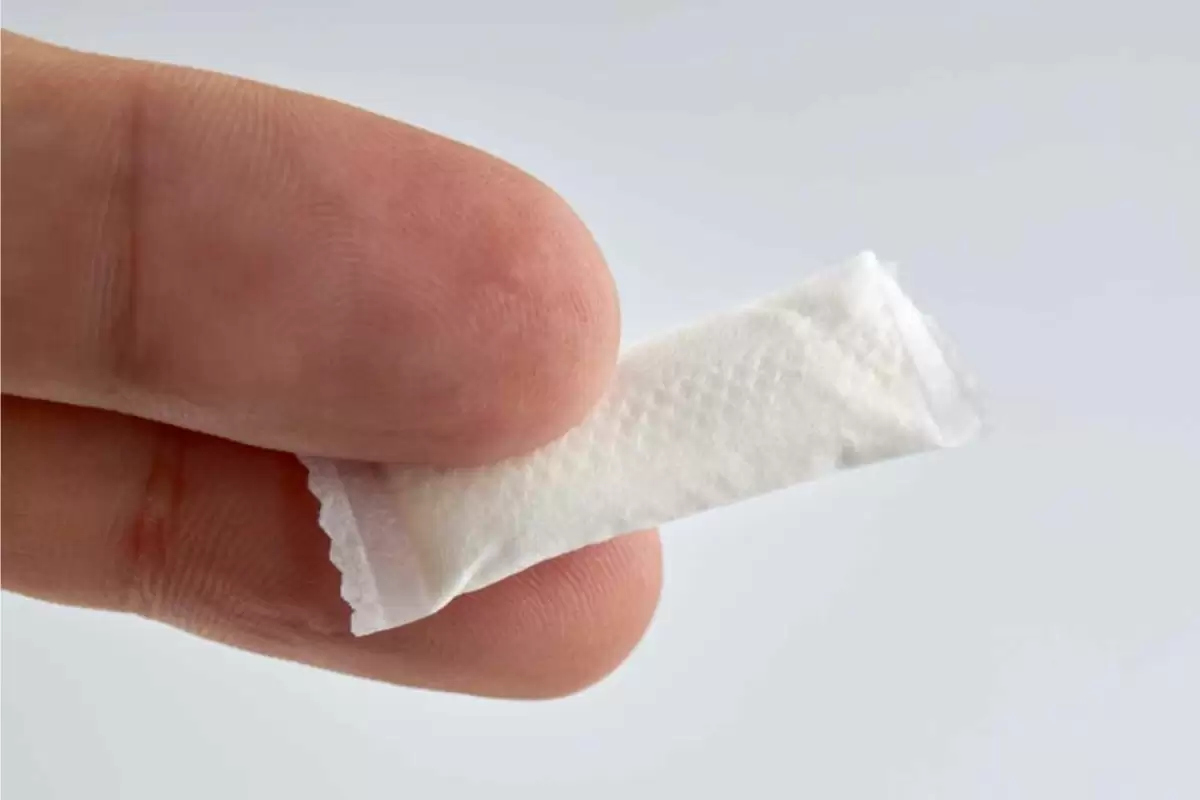Introduction
The path to quitting smoking is undoubtedly bumpy, yet the many smoking-cessation aids now in existence show that those who want a life free from nicotine do have some ray of hope and at least a few options. Nicotine replacement therapy (NRT) leapfrogs from there to become the most effective (qualified!) smoking-cessation aid currently available.
Here’s the thing about NRTs: they simply replenish the nicotine the body is used to getting from smoking but without all the other harmful chemicals that are present in tobacco cigarettes made through combustion. If you replace these harmful chemicals with straightforward nicotine, you can avoid withdrawal symptoms and the treacherous path towards smoking more – paving the way to cease smoking altogether.
Nicotine pouches and nicotine gum are two of today’s most preferred and common NRT products. By the start of the new year, 2024, nicotine pouches and nicotine gum had already become so popular that there is hardly any smokeless product on the market that people exchange for them.
Nicotine pouches are still an emerging type of NRT. These are tobacco-free and give a smoke-free form of nasal nicotine. But they provide an alternative that each of you might find is more suitable than patches, lozenges or inhalers. These are new-age therapeutic devices that you can keep in your mouth so that – just like with electronic cigarettes – nicotine is absorbed through the mucous membranes of the mouth without being detected. The other alternative product is nicotine gum, which also provides a drip of nicotine into the mouth, but you have to chew the gum, which will also address oral cravings, which many people experience when they quit smoking.
Despite their differences, both methods fulfil the same general function – helping smokers cope with cravings and withdrawal – but in ways more suited to various lifestyle and palate. The more we know about the similarities and differences between the two, the easier it will be to discern which replacement is more likely to enable you to be smoke-free come 2024.
What are Nicotine Pouches?
Nicotine pouches are a new development in the history of nicotine replacement therapy, designed for low-profile and easy use. The fill consists of a portioned dose of nicotine laced with flavourings and a fibrous filler substance – among other excipients – formed into a ‘tea bag’-like pouch that does not contain or use tobacco leaf, differentiating it from conventional snus. For this reason, nicotine pouches are a tobacco-free form of consumption.
Since the rise of dissatisfaction with smoking, innovations in smoking cessation have sprouted over tobacco products. One of the more recent trends controversially accepted is the use of nicotine pouches. Starting out as a Swedish offspring of snus, the nicotine pouch has developed in the past decade into a way to further disconnect nicotine from tobacco.
The pouch is placed between the gum and the upper lip where users are meant to absorb the nicotine through their gums. Unlike chewing tobacco or snus, no spitting is required, making this form of nicotine consumption that much cleaner and, one might say, classier.
Their sales have exploded in Europe, based on their easy availability and an increasing awareness of the ‘harm reduction’ potential of them. They are marketed to smokers who are trying to quit, but don’t want to use pharmaceuticals, or the other more visible nicotine-replacement efforts such as patches or gum. They also appeal to the many varieties of flavours and nicotine strengths.
It’s that combination of convenience, discretion, and choice that has made nicotine pouches extremely popular in Europe with consumers who want to quit combustible tobacco products. And innovation and consumer feedback are likely to continue to drive the development and acceptance of nicotine pouches as a viable delivery format within the world of NRT (nicotine-replacement therapy).
Understanding Nicotine Gum
Nicotine gum was also one of the first nicotine replacement therapies created, allowing those with a desire to quit smoking a way to reduce their nicotine intake in a convenient and controlled manner. It is, in addition to being a source of nicotine, a form of replacement therapy with a psychological component, targeting the oral fixation experienced by many quitters who no longer have cigarettes to smoke.
Nicotine gum was first made available in the 1980s and has been enhanced over the years in order to enhance effectiveness and usability. The gum is available in two strengths – 2 mg and 4 mg per piece – with the latter concentration aimed at heavier smokers. Nicotine is absorbed either by placing the gum under the tongue and chewing until it reaches a certain consistency or by chewing thoroughly to create enough saliva in the mouth to do the absorption within it.
Even so, and regardless of its identity, nicotine gum has been at the forefront of efforts to curb smoking around the world for decades. Its ubiquity and over-the-counter availability make it accessible for most smokers. Smokers chew nicotine gum as a momentary distraction from smoking, i.e., dealing with the habit itself, something many smokers find they do as much as they smoke.
Nicotine gum, so far, has weathered the onslaught of newer products such as nicotine pouches and vaping devices, partly due to its ease of use – the direct control that a smoker has over their nicotine dose when it is put between the teeth and the saliva mixes with it.
The fact that new flavours are added to the market (in addition to traditional mint and fruit) shows an ongoing attempt to improve the liking of the nicotine gum, making it more versatile for a smoker who is trying to quit.
Comparative Analysis: Effectiveness
If we were to ask which is more effective at helping someone stop smoking – nicotine pouches or nicotine gum – we would need both well-controlled empirical studies and their (opinionated) users to help answer that question.
Research on Nicotine Pouches
Studies targeting nicotine pouches have begun to emerge, with recent reports suggesting that they can effectively reduce cigarette cravings and help users get through any withdrawal symptoms they might experience. Because of their discrete nature, nicotine pouches can also be used in a wide variety of social settings.
Comparative Studies on Nicotine Gum
Conversely, decades of research have confirmed the efficacy of nicotine gum, which doubles the chances of quitting smoking as part of a cessation programme, often providing immediate relief for cravings when chewed to help break the habits that beg for a cigarette.
User Testimonials and Expert Opinions
Users’ testimony often demonstrates that both options are practical. For example, several reviews about nicotine pouches concentrate on the convenience and the lack of smoke or emissions that allow for their use in many places where smoking is not permitted, such as in the workplace. On the other hand, users of nicotine gum value the possibility to regulate their intake more accurately by either chewing quickly to not overdose or keeping it in the mouth and intensifying the chewing whenever the need for nicotine, or even just for distraction, occurs.
Clinicians recommend the method of cessation that is most likely to suit your habits and preferences, with those who like to consume tobacco more discreetly making nicotine pouches the obvious choice, and those who need some oral stimulation to protect themselves against cravings finding nicotine gum more effective.
Summary
And both nicotine pouches and nicotine gum are good ways to quit smoking – that is, each of these options has its advantages and you can choose the most appropriate one for yourself, taking into account your lifestyle and personal cessation needs in more detail.
To say this is to also emphasise that the research backing either product is quite good in this regard but, as a general rule, the best results tend to come from a use of both NRT and smoking cessation aids as part of a more holistic, personally tailored smoking cessation programme that also encompasses clinical support from health care professionals.
Health Implications
These considerations become important when using nicotine pouches and nicotine gum to help people quit smoking, as the health impact can sway the decision when someone wants to quit smoking.
Health Risks Associated with Nicotine Pouches
Unlike a smoking cigarette – which has proven beyond doubt to be much more deadly than pouches – pouches are not completely risk-free. The main concern is the potential toxicity of the nicotine over extended periods of time, which can increase the risk of cardiovascular problems and dependence. Another concern is irritation of the gums and other oral problems associated with constant exposure of the pouch material to the mouth’s mucous membrane.
Potential Health Effects of Long-Term Nicotine Gum Use
You also have to chew a lot: nicotine gum comes with its own risks, chiefly due to prolonged nicotine exposure. Chewing gum wouldn’t interfere with reduced intake of nicotine, but use over an extended period, as in the case of chronic smoking, could. But chronic nicotine exposure has been linked to cardiovascular risks, and growing dependence is a risk, too, even as we recognise it as a well-meaning one. Plus, chewing gum all the time can give you jaw pain and a sore mouth, along with other dental issues, but they’re seldom so serious as the effects of smoking.
Safety Profiles of Both Options
Nicotine pouches and nicotine gum are both approved and regulated medicinal health products meant to be part of a strategy to stop smoking. The safety profiles of these products are far superior to those of combustible cigarettes since neither product involves the inhalation of tar or other combustion products. As such, their manufacturers are right to encourage consumers to follow the guidelines they’ve been given and use the products as short- to medium-term aids rather than a permanent solution.
These NRT products are intended to be used with the guidance of healthcare professionals who can monitor response to treatment and provide individualized support and guidance on product use based on specific health profiles and smoking habits. That way, spit pouches or gum use becomes effective and health risks are minimized.
Conclusion
In the end, even if one wants to argue that the use of nicotine pouches or nicotine gum is associated with negative health consequences, these are significantly less than would be associated with its combusted counterpart. It would seem that nicotine pouches should be used judiciously, as part of a bigger plan to quit smoking, including counselling, disincentives, and maybe dependent medication to treat aspects of the broader addiction.
In all this talk, and confusion, and squawking, what remains to be said? The problem with all of this is that the quitting programs, without addressing the underlying nicotine addiction, will fail, and continued use of oral products without the investment in quitting will likewise likely not be that successful. Given the enormous toll that smoking takes, both materially and mentally, as well as human life itself.
User Experience and Accessibility
User experience and accessibility are key to adoption and the final evaluation of success. It’s no different with nicotine pouches and nicotine gum. Each affords an array of unique benefits, and whether one way of ingesting nicotine is ‘more’ or ‘less’ effective or ‘better’ or ‘worse’ than another is ultimately determined by the individual user.
Ease of Use: Pouches vs Gum
One of the aspects of nicotine pouches that is often praised is that they’re the most discreet and least obtrusive nicotine product out there: ‘whether it’s a plane or a nightclub, I could have it and everyone wouldn’t notice it,’ says a user. You put them discreetly between gum and lip, and away you go.
On the other hand, releasing nicotine from nicotine gum requires actively chewing the gum; although this can be useful for releasing oral cravings, a common symptom in cessation, it can also be considered a downside, as chewing the gum alerts people around you when you chew it.
Availability and Accessibility in Different Regions
Although these products are widely available in many countries and regions, in Nigeria it is easier to access nicotine gum; Nicotine gum has been on the market for a long time and you can find it in pharmacies, supermarkets, and even online. This mass appeal makes it easy to obtain it virtually anywhere.
In the context that nicotine pouches are comparatively newer to the market in many regions, and those who are considering trying them (such as someone who smokes or vapes, looking for options to reduce their chances of getting sick or needing a ventilator) may not be adequately aware of their availability (they are becoming quite widely available in large parts of Europe and much of North America in convenience and grocery stores, in specialist retailers, and through online suppliers).
Cost Comparison and Economic Considerations
Additionally, cost is another factor worth considering. Generally, nicotine gum is more cost-effective in the long run, especially if you can buy it in bulk, as nicotine pouches are more expensive and reflect their novelty and the wide variety of flavours available on the market.
There are then the economic considerations to bear in mind, which depends on whether these nicotine replacement therapies are more effective and users find them easier to use than conventional chewing tobacco. While some users might pay more for nicotine pouches compared with nicotine gum if they prefer the convenience and discretion they offer, others might opt to use nicotine gum due to cost and familiarity.
Conclusion
The decision of whether nicotine pouches or nicotine gum is your preference will ultimately all come down to user preferences: which device is easiest to use, which is available in your country, which one is cost-effective. Both nicotine pouch and nicotine gum are excellent nicotine replacement options when someone wants to quit smoking. They fulfill different needs and lifestyles, and one must consider all the above before deciding what nicotine replacement therapy is a better selection based on one’s own circumstances and goals to quit smoking.
Conclusion and Recommendations
So by 2024, we can conclude our journey into the world of these stop-smoking products – the nicotine pouches and nicotine gum – realizing that actual quit-smoking users have plenty to choose from, and that the particular avenue might depend on their lifestyle, preferences, and specific cessation needs.
Summarizing Key Points from the Analysis
Nicotine pouches are also easy to use in situations where being discreet might be useful, such as when important people are around or when nicotine cravings strike in a business setting.
Nicotine gum also relieves cravings right away, but through a different mechanism of action, by addressing the oral fixation that smoking provides in addition to nicotine.
Both are efficacious when used in conjunction with smoking cessation interventions that help balance varenicline withdrawal symptoms, offer nicotine supplementation and otherwise provide behavioural support, and in some cases, other pharmacological aids.
Personalized Advice for Choosing Between Nicotine Pouches and Gum
If discretion and convenience are your priorities, the nicotine pouches would arguably be the better choice because you can use them wherever and whenever you like, without any smoke or spittle.
For those who are concerned with the physical habit of smoking but prefer a more active form of nicotine delivery, nicotine gum could be a better option.
Ideally, speak with a healthcare provider about these options to identify the best plan for you. A healthcare provider can suggest a method that works best for your individual health history, specific needs, and health and lifestyle goals.
Future Outlook on the Role of These NRTs in Smoking Cessation
In the near term, therefore, it’s clear that both nicotine pouches and nicotine gum will continue to be important tools for the worldwide effort at smoking cessation, and future research and user feedback might also lead to additional innovations that make use of them – making them even easier and more effective for a broader audience.
Overall, the answer to choosing between nicotine pouches versus gum mostly depends on the individual. However, there are different considerations that can aid people in their successful switch away from smoking in 2024 and beyond.
Common Questions About Nicotine Pouches
What are nicotine pouches?
Nicotine pouches are small bags that consist of nicotine and delicious flavours with various fillers. They are meant to be placed between the lip and gum. The nicotine is absorbed via the mucous membrane of the mouth.
How do nicotine pouches work?
The nicotine from the pouch is absorbed through the gums, giving the user the nicotine hit without the need to smoke, vape or chew tobacco.
Are nicotine pouches safe?
The good news is that nicotine pouches are likely safer than smoking: they’re not a product of combustion like cigarettes, nor are they ‘smokeless’ tobacco like dipping or chewing products, for reasons of composition (they lack tobacco leaf) and chemistry (they don’t produce combustion products). The bad news is that they do deliver nicotine. Nicotine is the most potently addictive drug our world has ever created, and nicotine itself can have cardiovascular consequences.
Could nicotine pouches be helpful for smoking cessation?
For many users, nicotine pouches are seen as a useful tool for smoking cessation because they provide a controlled dose of nicotine to help manage withdrawal symptoms and cravings.
How long do you use them?
As long as it takes. Some for very short periods, as part of the process of stopping, and others indefinitely. It depends, and you should talk to a healthcare provider for more personalized advice.
What are the different flavours of nicotine pouches?
Some nicotine pouches come with mint, fruit, coffee flavour.
Where can I buy nicotine pouches?
Nicotine pouches can be purchased in convenience stores or tobacco shops but are also increasingly available online. Availability depends on the region.
Do nicotine pouches have side effects?
Possible side effects are mouth irritation, hiccups, stomach discomfort/nausea, and sore throat. Research on long-term effects is ongoing.
How much does a pack of artificial smoke pouches cost?
Nicotine pouches are not particularly cheap, depending on the brand: artificial smoke pouches are considered slightly more expensive, on average, than various other forms of nicotine-replacement therapy.
Is nicotine pouch snus something for everyone?
The product is intended for adult smokers trying to quit or reduce harm from tobacco use. People who don’t smoke, pregnant women or those under the legal tobacco age shouldn’t use these products.
Here are five scholarly articles related to nicotine pouches that you might find useful:
- “Nicotine Pouch Awareness and Use Among Youth, National Youth Tobacco Survey“ – This study provides insights into the awareness and use of nicotine pouches among youth, detailing their prevalence and the factors influencing their popularity.
- “Physicians’ Discussions With Patients About Tobacco-Free Nicotine Pouches“ – This article examines how physicians discuss tobacco-free nicotine pouches with their patients, shedding light on medical perspectives regarding their use and safety.
- “Estimating the public health impact had tobacco-free nicotine pouches been introduced into the US in 2000“ – This research estimates the potential public health impact if nicotine pouches had been introduced earlier, using data and projections to assess their potential benefits and risks.
- “Characterization of Total and Unprotonated (Free) Nicotine Content of Nicotine Pouches“ – This study focuses on the chemical analysis of nicotine pouches, specifically measuring the nicotine content and its bioavailability.
- “Nicotine Pouch: Awareness, Beliefs, Use, and Susceptibility among Current Tobacco Users in the United States, 2021“ – This article investigates the awareness, beliefs, and usage patterns of nicotine pouches among U.S. tobacco users, providing detailed demographic data and usage trends.













